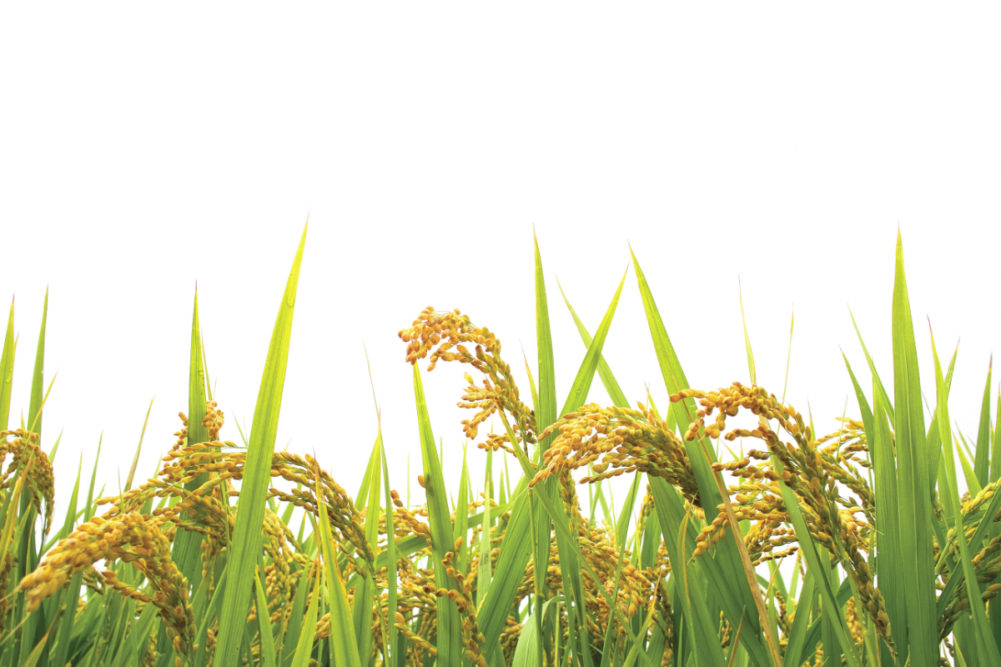WASHINGTON, DC, US — The Agricultural Research Service of the US Department of Agriculture in partnership with university scientists are hoping to identify US rice varieties with genetic markers for coping with reduced water use.
Their research is in line with the water saving trend that US rice growers are implementing.
According to the ARS, rice traditionally is grown in leveed sections of fields called paddies that can be flooded with water pumped in from rivers, alluvial aquifers, on-farm reservoirs, and other sources. Such flooding helps control weeds and ensures the rice crop can attain its maximum yield potential.
But with issues such as water availability and climate change, Jai Rohila and Anna McClung, both with the ARS Dale Bumpers National Rice Research Center as well as Christopher Henry with the University of Arkansas and Argelia Lorence with Arkansas State University are looking to identify traits that can help the grain crop cope with reduced water.
“Reducing water use, which is currently about 30 inches per acre over the season for Arkansas-grown rice, is a necessary step toward sustainable production of rice and food security,” said Rohila, an agronomist. “About 80% of the irrigation water for the Arkansas rice crop is pumped from the Mississippi River Valley alluvial aquifer.”
Over the past four decades, however, the aquifer’s water levels have dropped at the rate of 12 to 18 inches per year, Rohila said. Alternate wetting and drying, furrow irrigation, land leveling, tailwater recovery and multiple-inlet irrigation are some of the strategies that growers are investigating or already using to conserve water, in some cases by 20%.
But there is a genetic hiccup that can lead to grain yield reductions under such measures.
“All current rice varieties in the United States were essentially developed for production under continuous flood irrigation management systems,” said McClung, a supervisory geneticist who directs the ARS center. “We conducted this research to determine what are the traits and genetic resources that can be used to develop new rice cultivars that will have high grain quality and yield under reduced irrigation inputs.”
Toward that end, the team designed a series of field experiments in which they subjected 15 different rice cultivars (conventional medium- and long-grain varieties as well as specialty rice) to sub-surface drip irrigation regimens based on one of four soil-moisture scenarios, or volumetric water contents (VWCs).
The first scenario was comparable to conventionally flooded field conditions with a VWC of 30%. The fourth mimicked a severe water-deficit scenario (VWC 14%) capable of triggering catastrophic wilting from which the rice crop cannot recover. In between these extremes were two moderate water-deficit scenarios with VWCs of 24% and 20%.
“This gradient of soil moisture regimes in our study allowed us to assess how well the varieties can respond to varying degrees of water deficit,” Rohila said.
Among the results, the researchers reported that:
- Of 10 total traits (e.g., plant height, flowering time/duration, and grainfill) they examined, six traits accounted for 35% of the variability in the varieties' physiological responses to water stress, including their ability to produce grain.
- Plant height was generally greatest in the first soil-moisture scenario (mimicking flooded fields), except for five of the varieties tested. Grain yields were also highest in the first scenario, except for seven varieties, which performed better in scenarios two and three.
- Varieties with higher leaf canopy temperatures tended to produce the most grain under water-stress conditions.
- Those same varieties also had genetic origins in tropical or subtropical regions of the world, where heat stress conditions are common, another form of physiological stress.
- One top contender that performed well under water-stress conditions is a tropical japonica-type rice from the Philippines known as PI 312777. Other top performers were Francis and Mars from the United States and Zhe 733 from China. Among the cultivars tested, 10 have been used to develop populations of offspring displaying different stress-coping traits that can be used with genomic mapping techniques, which according to the researchers can help identify the genes that control these traits and potentially use them in rice breeding and improvement programs.
McClung said they aim to provide rice breeders with DNA markers associated with the genes and alleles (alternate copies) for these traits so that they can be passed into elite rice varieties more quickly, efficiently and with less cost.
The researchers indicate that this is the first step in adapting rice varieties to production systems that use a minimum amount of irrigation.
“We understand our vision is ambitious," Rohila said. “But the goal is to have both food and natural resource (water) security for society and our future generations.”
To read more about the research visit Agronomy and take a look at the findings.





